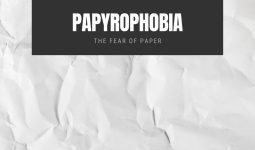The word for fear of blushing is erythrophobia. A phobia is a form of anxiety disorder in which an individual encounters intense fear or anxiety about a specific situation or object.
It can lead to erythrophobia if a person experiences extreme blushing, which can adversely affect their work and social life.
People may avoid meeting others or engaging in circumstances that may cause them to blush, such as interviews or public speaking.
People who experience social phobia, such as glossophobia, can be prone to this involuntary response.
Keep reading to learn more about the causes, signs, and more.
Causes of Erythrophobia
People with erythrophobia can be fixated on whether or not they are blushing, and when they are not, they may even believe they are blushing.
Severe blushing occurs mainly on the cheeks and forehead and may also spread to the ears, neck, and upper chest. Blushing is a typical physical response to social phobia, feeling embarrassed or nervous.
Blushing is caused by increased blood flow below the skin’s surface, but scientists are not sure why such social conditions cause blood flow to increase in the face.
One 2012 research paper indicates that blushing may elicit sympathy, faith, or support from others. Blushing is a dynamic and spontaneous reaction to many social circumstances.
A person may blush if they make a real or perceived mistake in front of others, but they may also blush in positive interactions, such as when they receive thanks or compliments.
As people with social anxiety appear to feel embarrassed or easily overwhelmed in society, social anxiety may also cause erythrophobia.
People with social anxiety are also afraid of being judged or embarrassed by others, which may make their fear of blushing worse. Erythrophobia can also be made worse by social anxiety.
People with social anxiety may hyperfocus on how others view their blushing, and they may be more afraid of blushing due to these potential adverse perceptions.
Symptoms of Erythrophobia
The symptoms of erythrophobia have associations with symptoms of anxiety disorders.
These symptoms can include:
- A churning feeling or butterflies in the stomach
- Restlessness
- Sweating
- Panic attacks
- Fast breathing
- Fast heartbeat
The social cost of blushing can concern a person with erythrophobia. For example, a person might assume that if people see them blush, they will lose social support or that others may think negatively of them if they blush.
People with social anxiety and phobias may have higher levels of self-centered attention (SFA). This implies that a person focuses a lot on their reactions and conduct during social interactions.
Those with erythrophobia may be very conscious that they are blushing, and noticing that they are blushing may intensify their blushing and erythrophobia.
Treatment of Erythrophobia
For erythrophobia, a variety of treatment options are available, including the treatment of extreme blushing alone. Treatments may include counseling by a mental health professional, surgery, or medication.
There are distinct therapies for physical blushing and treating the erythrophobia of an individual.
Therapy
Since erythrophobia is an anxiety condition, clinicians treat it similarly to social anxiety disorder (SAD). They will, however, concentrate on a particular fear of blushing, and care can require treatment.
Cognitive Behavioral Therapy
To help control their erythrophobia, a person may try forms of talking therapy, such as cognitive behavioral therapy (CBT). To help them handle their symptoms in the future, CBT allows people to break down, consider their emotions and reactions, and develop coping mechanisms.
Task Concentration Training (TCT)
A person with a high SFA may not pay much attention to the other individuals in a group or to their tasks during social situations. They may also become very conscious of blushing.
With Task concentration training, which consists of three steps, an individual may enhance their erythrophobia:
- Understanding the influence of their SFA during social interactions and where their focus lies
- Focusing their focus outward instead of inward in non-threatening situations
- Focusing their focus outward rather than inward in risky circumstances
Individuals may retrain themselves during TCT to concentrate on tasks rather than their responses and blushing.
Exposure Therapy
Exposure therapy tends to decrease avoidance tactics, such as avoiding the eyes or concealing the lips, and safety patterns, such as using makeup to hide blushing.
Without using safety habits or avoidance techniques, repeated exposure to blushing over time can make a person feel more relaxed when they blush and decrease their erythrophobia.
Mindfulness
Mindfulness is a meditation form. In practice, an individual concentrates on the present moment without being reactive or expecting results. This focus on a particular category can divert a person’s attention away from blushing and help reduce erythrophobia.
Medication
For the treatment of erythrophobia, there is no particular drug. The forms of antidepressants used by physicians to treat anxiety disorders are selective serotonin reuptake inhibitors (SSRIs) and selective serotonin-norepinephrine reuptake inhibitors (SNRIs).
These may reduce the anxiety that a person feels about blushing. To lower anxiety and symptoms of erythrophobia, doctors may prescribe benzodiazepines, although they are addictive and often not suitable for long-term use.
Beta-blockers do not treat psychological manifestations of anxiety disorders. Physical signs of anxiety, such as rapid heartbeat and trembling, are treated. If a person knows they will experience erythrophobia in a certain situation, beta-blockers may help control these symptoms.
Surgery
Endoscopic thoracic sympathectomy (ETS) is a procedure that can minimize erythrophobia and facial blushing. The treatment involves cutting the sympathetic nerves that monitor sweating and blushing.
While doctors primarily use Endoscopic thoracic sympathectomy to treat excessive sweating, some studies have shown that excessive blushing can also be effectively treated.
A doctor would only prescribe surgery as a last resort if no other treatments have succeeded. Under general anesthetic, the Endoscopic thoracic sympathectomy operation takes place and involves the surgeon making a slight incision below the armpit.
The surgeon causes the lung to collapse on the side of the incision, allowing room for the operation to be done by them. To find and sever the correct nerves, they then insert a tiny camera into the incision.
Side Effects
ETS can contribute to side effects. When a surgeon performs a procedure to treat sweating, compensatory hyperhidrosis can occur.
This implies that sweating can stop in one area but increase in another area. This generally happens in the back or stomach.
If an individual undergoes ETS to treat excessive blushing, the treatment can only be effective on one side of their face, and on the other side of their face, the person still blushes.
According to the Circulation Base, after 15 years of follow-up visits, 93 percent of individuals who had ETS surgery were completely cured of excessive sweating.
However, as erythrophobia is an anxiety condition, it does not avoid a person’s fear of blushing by blocking the actual blushing mechanisms. Some individuals experience phantom blushing after surgical procedures, which may exacerbate erythrophobia.
Phantom blushing makes a person feel as if they are blushing when they are not blushing.
Conclusion
Erythrophobia is a type of social anxiety that can adversely affect an individual’s social interactions and everyday life. Although a typical physical reaction to emotional stimuli is blushing, experts do not completely understand what causes blushing and erythrophobia.
Consequently, therapies concentrate on treating the symptoms of social anxiety that can cause or exacerbate erythrophobia. Erythrophobia has many coping options, including talk therapy, exposure therapy, medication, and surgery.
If a person can handle some broader social anxiety symptoms with these choices, they can find that their erythrophobia symptoms improve.
References:
- Erythrophobia: Healthline
- What to know about erythrophobia: Medical News Today
- Unbearable blushing: Parents speak out about son’s suicide: NBCN
- Resolve Blushing / Erythrophobia: Social Anxiety








